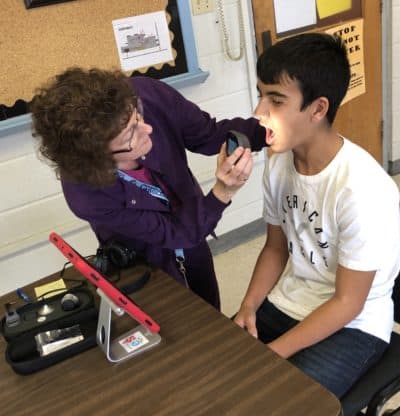
Tim Hardison was teaching seventh grade science in Martin County when he learned residents there had the shortest life expectancy in North Carolina. Diabetes and cardiovascular disease – both as a result of obesity – were partially to blame.
Knowing these conditions were preventable through healthy eating and physical activity, in 2006 Hardison created and implemented the MATCH (Motivating Adolescents with Technology to CHOOSE Health) program in his own classroom. By the 2019-2020 school year, almost 11,000 students across the state were enrolled in what is now called MATCH Wellness.
Based in Greenville, MATCH Wellness is a curriculum for teaching students to make healthy nutrition and fitness choices. The curriculum is designed to be incorporated across all seventh-grade courses and is in alignment with Common Core standards. Every seventh grader enrolled in a school district participating in MATCH is automatically a participant.
MATCH Wellness focuses on reducing childhood obesity by incorporating an educational-behavioral approach. This method combines interdisciplinary lessons with evidence-based approaches to behavioral change. Using personal workbooks and a secure website, students track their own health choices and use their data to engage in lessons embedded in their science, math, language arts, social studies, and healthful living courses.
Because the program was developed by a teacher, it’s designed with the goal of not creating extra work for teachers or administrators. MATCH Wellness provides complete lessons and the training for teachers to implement them. One teacher per school serves as a coordinator across disciplines and maintains contact with a district liaison provided by MATCH Wellness.
When MATCH started, founder Tim Hardison said the biggest challenge was convincing educators of the connection between health outcomes and academic outcomes. Teachers can be protective of instructional time so may resist a program they perceive to be taking away from that time. “You’ve got to really design these lessons to meet your educational objectives,” Hardison says.
Early in its development, MATCH partnered with researchers at East Carolina University (ECU), who helped manage the program and studied its results. These researchers consistently found statistically significant reductions in the body mass index Z-scores of two-thirds of students.1 One study found lower rates of obesity among participants four years later when compared to a control group.
A significant amount of additional research linking health and educational outcomes in the last decade or so has helped many teachers see why it makes sense to implement a health program into their curricula. Now the primary challenge is consistent implementation of the program. As Hardison explained, “It doesn’t matter how good a program is if it’s not implemented with fidelity.”
Hardison readily acknowledges there is wide variety in fidelity of implementation: “About a third of the schools do a pretty good job, about a third do fair, and a third do practically nothing. But even with that, we have still seen statistically significant improvement in student health outcomes each year. So my whole goal now is how do we move that lower third, that middle third to become more effective?”
The cost of implementing the MATCH Wellness program is about $100 per seventh grader annually. This price includes student workbooks, access to online materials, training for participating teachers, and stipends for school and district liaisons to manage implementation. MATCH partners with ECU to access funding for the program, so school districts do not have to carry the financial burden.
Supplemental Nutrition Assistance Program Education (SNAP-Ed)—a federal program designed to support the health and wellness of people who are eligible for SNAP benefits—is MATCH Wellness’s primary source of funding. ECU submits a proposal as part of North Carolina’s SNAP-Ed plan, then distributes the funds to MATCH on behalf of participating school districts.
MATCH Wellness was designed with replication in mind. It can be implemented in any North Carolina school district as long as funding is available. Hardison suspects an increase in demand for the program among school districts would lead to a corresponding increase in funding availability through the state’s SNAP-Ed plan.
While MATCH was created to address students’ physical health, prior to the outbreak of COVID-19, Hardison was already in the process of developing a more holistic approach to student health. With the creation of a new workbook focused on social, emotional, and behavioral health, he hopes MATCH can be a resource for more schools in the post-pandemic era.
Hardison predicts, “When we make it through this pandemic, because of the job loss, unemployment, we’re gonna see family stress like we’ve never seen anywhere, anytime, ever. [Schools] are gonna be facing problems that they’ve never seen or prepared for.”
This article is part of a series on innovative approaches to health in schools. Find the rest of the articles here.
Recommended reading


